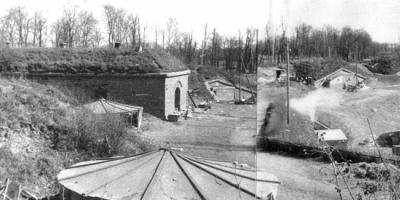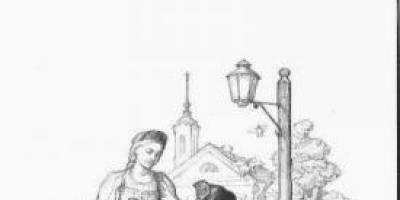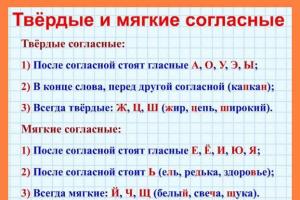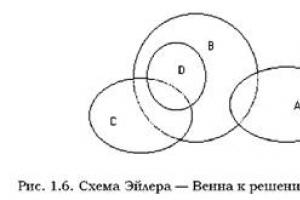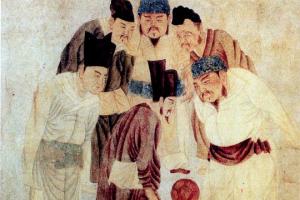During 1944–1945 at the final stage of the Great Patriotic War, the Red Army liberated the peoples of South-Eastern and Central Europe from the totalitarian regimes of their own rulers and the German occupation forces. The Red Army provided assistance in the liberation of Romania, Bulgaria, Yugoslavia, Poland, Czechoslovakia, Hungary, Austria and Norway (Finmark province).
The liberation of Romania occurred mainly as a result of the Iasi-Kishinev strategic offensive operation. It was held from August 20 to 29, 1944. Moldova was liberated and royal Romania was removed from the Nazi bloc.
The Bulgarian army did not conduct military operations against the Red Army troops. On September 5, 1944, the Soviet Union broke off diplomatic relations with Bulgaria and declared a state of war between the USSR and Bulgaria. The Red Army entered the territory of Bulgaria. On September 6, Bulgaria turned to the Soviet Union with a request for a truce. On September 7, Bulgaria decided to sever its relations with Germany, and on September 8, 1944, declared war on Germany.
In Yugoslavia, from September 28 to October 20, 1944, the Red Army carried out the Belgrade strategic offensive operation. As a result of the Belgrade operation, the Red Army, in close cooperation with the partisan army of Marshal Tito, defeated the army group "Serbia". On October 20, 1944, Belgrade was liberated.
The liberation of Poland occurred as a result of the second stage of the Belarusian operation. From the second half of 1944 to April 1945. The territory of Poland was completely cleared of German troops. The Red Army defeated most of the troops of Army Group Center, Army Group Northern Ukraine and Army Group Vistula.
Having liberated Poland, the Red Army and the Polish Army reached the Oder and the coast of the Baltic Sea, creating the conditions for a broad offensive on Berlin.
The liberation of Czechoslovakia followed as a result of the East Carpathian, West Carpathian and Prague strategic offensive operations. The East Carpathian operation was carried out from September 8 to October 28, 1944.
The West Carpathian operation was carried out from January 12 to February 18, 1945. As a result of the West Carpathian operation, most of Slovakia and the southern regions of Poland were liberated.
The final operation of the Red Army in Europe was the Prague strategic offensive operation, which was carried out from May 6 to 11, 1945. During the rapid offensive, Czechoslovakia and its capital Prague were liberated.
The liberation of Hungary was achieved mainly during the Budapest and Vienna strategic offensive operations. The Budapest operation was carried out from October 29, 1944 to February 13, 1945. As a result of the Budapest operation, Soviet troops liberated the central regions of Hungary and its capital Budapest.
The liberation of Austria occurred during the Vienna Strategic Offensive Operation, which took place from March 16 to April 15, 1945.
The liberation of the northern regions of Norway was achieved as a result of the Petsamo-Kirkenes strategic offensive operation, which took place from October 7 to October 29, 1944.
The capture of Petsamo and Kirkenes by parts of the Red Army and the Northern Fleet sharply limited the actions of the German fleet on the northern sea lanes and deprived Germany of supplies of strategically important nickel ore.
One of the most significant operations carried out by the Red Army in 1945 was the storming of Königsberg and the liberation of East Prussia.
Fortifications of the Grolman upper front, Oberteich bastion after capitulation/
Fortifications of the Grolman upper front, Oberteich bastion. Courtyard.

Troops of the 10th Tank Corps of the 5th Guards Tank Army of the 2nd Belorussian Front occupy the city of Mühlhausen (now the Polish city of Mlynar) during the Mlawa-Elbing operation.

German soldiers and officers captured during the assault on Konigsberg.

A column of German prisoners walks along Hindenburg Strasse in the city of Insterburg (East Prussia), towards the Lutheran Church (now the city of Chernyakhovsk, Lenin Street).



Soviet soldiers carry the weapons of fallen comrades after a battle in East Prussia.

Soviet soldiers learn to overcome barbed wire barriers.

Soviet officers inspect one of the forts in occupied Konigsberg.

An MG-42 machine gun crew fires near the railway station of the city of Goldap in battles with Soviet troops. 
Ships in the frozen harbor of Pillau (now Baltiysk, Kaliningrad region of Russia), late January 1945.

Königsberg, Tragheim district after the assault, damaged building.

German grenadiers are moving towards the last Soviet positions in the area of the railway station in the city of Goldap.

Koenigsberg. Kronprinz Barracks, tower.

Koenigsberg, one of the inter-fort fortifications.

The air support ship Hans Albrecht Wedel receives refugees in Pillau harbor.

Advanced German troops enter the East Prussian town of Goldap, which was previously occupied by Soviet troops.

Koenigsberg, panorama of the ruins of the city.
The corpse of a German woman killed by an explosion in Metgethen in East Prussia.

The Pz.Kpfw tank belonging to the 5th Panzer Division. V Ausf. G "Panther" on the street of the city of Goldap.

A German soldier hanged on the outskirts of Königsberg for looting. The inscription in German “Plündern wird mit-dem Tode bestraft!” translated as “Whoever robs will be executed!”

A Soviet soldier in a German Sdkfz 250 armored personnel carrier on one of the streets of Koenigsberg.

Units of the German 5th Panzer Division move forward for a counterattack against Soviet forces. Kattenau region, East Prussia. Ahead is a Pz.Kpfw tank. V "Panther".


Koenigsberg, barricade on the street.

A battery of 88 mm anti-aircraft guns is preparing to repel a Soviet tank attack. East Prussia, mid-February 1945.

German positions on the approaches to Koenigsberg. The inscription reads: “We will defend Koenigsberg.” Propaganda photo.

The Soviet self-propelled gun ISU-122S is fighting in Koenigsberg. 3rd Belorussian Front, April 1945.

A German sentry on a bridge in the center of Königsberg.

A Soviet motorcyclist passes by German StuG IV self-propelled guns and a 105 mm howitzer abandoned on the road.

A German landing ship evacuating troops from the Heiligenbeil pocket enters Pillau harbor.

Koenigsberg, blown up by a pillbox.

Damaged German self-propelled gun StuG III Ausf. G in front of the Kronprinz Tower, Königsberg.

Koenigsberg, panorama from the Don Tower.

Koenisberg, April 1945. View of the Royal Castle

A German StuG III assault gun destroyed in Königsberg. In the foreground is a killed German soldier.

German equipment on Mitteltragheim street in Königsberg after the assault. To the right and left are StuG III assault guns, in the background is a JgdPz IV tank destroyer.

Grolman upper front, Grolman bastion. Before the capitulation of the fortress, it housed the headquarters of the 367th Wehrmacht Infantry Division.

On the street of Pillau port. Evacuated German soldiers throw their weapons and equipment before loading onto ships.

A German 88-mm FlaK 36/37 anti-aircraft gun abandoned on the outskirts of Königsberg.

Koenigsberg, panorama. Don Tower, Rossgarten Gate.

Koenigsberg, German bunker in the Horst Wessel Park area.

Unfinished barricade on Herzog Albrecht Alley in Königsberg (now Thälmann Street).

Koenigsberg, destroyed German artillery battery.

German prisoners at the Sackheim Gate in Königsberg.

Koenigsberg, German trenches.

German machine gun crew in position in Koenigsberg near the Don Tower.

German refugees on Pillau Street pass by a column of Soviet SU-76M self-propelled guns.

Koenigsberg, Friedrichsburg Gate after the assault.

Koenigsberg, Wrangel Tower, fortress moat.

View from the Don Tower on Oberteich (Upper Pond), Königsberg.

On the street of Koenigsberg after the assault.

Koenigsberg, Wrangel Tower after the surrender.

Corporal I.A. Gureev at his post at the border marker in East Prussia.

A Soviet unit in a street battle in Koenigsberg.

Traffic police officer Sergeant Anya Karavaeva on the way to Konigsberg.

Soviet soldiers in the city of Allenstein (currently the city of Olsztyn in Poland) in East Prussia.

Artillerymen of the guard of Lieutenant Sofronov are fighting on Avider Alley in Konigsberg (now Alley of the Brave).

The result of an airstrike on German positions in East Prussia.

Soviet soldiers are fighting in the streets on the outskirts of Koenigsberg. 3rd Belorussian Front.

Soviet armored boat No. 214 in the Koenigsberg Canal after a battle with a German tank.

German collection point for faulty captured armored vehicles in the Königsberg area.

Evacuation of the remnants of the "Gross Germany" division to the Pillau area.

German equipment abandoned in Konigsberg. In the foreground is a 150 mm sFH 18 howitzer.

Koenigsberg. Bridge over the moat to the Rossgarten Gate. Don Tower in the background

An abandoned German 105-mm howitzer le.F.H.18/40 at a position in Konigsberg.

A German soldier lights a cigarette near a StuG IV self-propelled gun.

A damaged German Pz.Kpfw tank is on fire. V Ausf. G "Panther". 3rd Belorussian Front.

Soldiers of the Grossdeutschland division are loaded onto homemade rafts to cross the Frisches Huff Bay (now Kaliningrad Bay). Balga Peninsula, Cape Kalholz.

Soldiers of the Grossdeutschland division in positions on the Balga Peninsula.

Meeting of Soviet soldiers on the border with East Prussia. 3rd Belorussian Front.

The bow of a German transport sinking as a result of an attack by Baltic Fleet aircraft off the coast of East Prussia.

The observer pilot of the Henschel Hs.126 reconnaissance aircraft takes pictures of the area during a training flight.

A damaged German StuG IV assault gun. East Prussia, February 1945.

Seeing off Soviet soldiers from Koenigsberg.

The Germans inspect a damaged Soviet T-34-85 tank in the village of Nemmersdorf.

Tank "Panther" from the 5th Panzer Division of the Wehrmacht in Gołdap.

German soldiers armed with Panzerfaust grenade launchers next to an MG 151/20 aircraft cannon in the infantry version.

A column of German Panther tanks is moving towards the front in East Prussia.

Broken cars on the street of Königsberg, which was taken by storm. Soviet soldiers in the background.

Troops of the Soviet 10th Tank Corps and the bodies of German soldiers on Mühlhausen Street.

Soviet sappers walk down the street of burning Insterburg in East Prussia.

A column of Soviet IS-2 tanks on a road in East Prussia. 1st Belorussian Front.


A Soviet officer inspects the German Jagdpanther self-propelled gun that was knocked out in East Prussia.

Soviet soldiers sleep, resting after the fighting, right on the street of Königsberg, which was taken by storm.

Koenigsberg, anti-tank barriers.

German refugees with a baby in Konigsberg.


A short rally in the 8th company after reaching the state border of the USSR.

A group of pilots of the Normandie-Niemen air regiment near a Yak-3 fighter in East Prussia.

A sixteen-year-old Volkssturm fighter armed with an MP 40 submachine gun. East Prussia.

Construction of defensive structures, East Prussia, mid-July 1944.

Refugees from Königsberg moving towards Pillau, mid-February 1945.

German soldiers at a rest stop near Pillau.

German quad anti-aircraft gun FlaK 38 mounted on a tractor. Fischhausen (now Primorsk), East Prussia.

Civilians and a captured German soldier on Pillau Street during garbage collection after the end of the fighting for the city.

Boats of the Red Banner Baltic Fleet undergoing repairs in Pillau (currently the city of Baltiysk in the Kaliningrad region of Russia).

German auxiliary ship "Franken" after an attack by Il-2 attack aircraft of the Baltic Fleet Air Force.

Bomb explosion on the German ship Franken as a result of an attack by Il-2 attack aircraft of the Baltic Baltic Fleet Air Force

A gap from a heavy shell in the wall of the Oberteich bastion fortifications of the Grolman upper front of Koenigsberg.


The bodies of two German women and three children allegedly killed by Soviet soldiers in the town of Metgethen in East Prussia in January-February 1945. German propaganda photo.

Transportation of the Soviet 280-mm mortar Br-5 in East Prussia.

Distribution of food to Soviet soldiers in Pillau after the end of the fighting for the city.

Soviet soldiers pass through a German settlement on the outskirts of Konigsberg.

A broken German StuG IV assault gun on the streets of Allenstein (now Olsztyn, Poland.)

Soviet infantry, supported by the SU-76 self-propelled gun, attacks German positions in the Königsberg area.

A column of self-propelled guns SU-85 on the march in East Prussia.

Sign "Motorway to Berlin" on one of the roads in East Prussia.

Explosion on the tanker Sassnitz. The tanker with a cargo of fuel was sunk on March 26, 1945, 30 miles from Liepaja by aircraft of the 51st mine-torpedo air regiment and the 11th attack air division of the Baltic Fleet Air Force.

Bombing of German transport and port facilities of Pillau by Red Banner Baltic Fleet Air Force aircraft.


The German hydroaviation mother ship Boelcke, attacked by an Il-2 squadron of the 7th Guards Attack Aviation Regiment of the Baltic Fleet Air Force, 7.5 km southeast of Cape Hel.

Syrian government troops have taken control of the city of Duma, the last stronghold of militants in Eastern Ghouta, said the head of the Center for the Reconciliation of Warring Parties, Yuri Yevtushenko.
Expert: the situation around Damascus is changing radicallyMilitants leave the Syrian city of Douma. This is a great success for the Syrian government army and the Russian military, Boris Dolgov, a senior researcher at the Center for Arab and Islamic Studies at the Institute of Oriental Studies of the Russian Academy of Sciences, noted on Sputnik radio.“Today a significant event took place in the history of the Syrian Arab Republic. The hoisting of the national flag over the building... of the city of Duma marked control over this settlement, and therefore over Eastern Ghouta as a whole,” the general said.
According to him, Russian military police units will be sent to the city liberated from militants to monitor law and order during the transfer of the Duma to the control of official Damascus.
Professor of the Diplomatic Academy of the Russian Foreign Ministry, Doctor of Historical Sciences Alexander Vavilov, on Sputnik radio, commented on the significance of the liquidation of the last militant enclave in Eastern Ghouta.
“The significance of the victory is difficult to overestimate due to the fact that Eastern Ghouta is actually the “soft underbelly” of Damascus. The most important thing is that this suburb was the last nest of terrorists near the capital. And the fact that it was possible to expel the terrorists from there and agree that they will clear "This strategically important area is a very big victory. It is impossible not to note the role of our Center for Reconciliation, because without its efforts, without its mediation, of course, it would have been very difficult and perhaps impossible to reach an agreement," said Alexander Vavilov.
According to him, the actions of the Russian military in Syria are noticeably different from the tactics of American troops in this country, including in the city of Raqqa.
“Among other things, it must be said that our actions contrast very much with the actions of the so-called American coalition, which bombed Raqqa and abandoned it - there corpses on the streets are still decomposing, everyone admits that a humanitarian catastrophe has occurred there. But with us, on the contrary , not only took civilians out of dangerous areas, but also immediately supplied them, with the assistance of our center, with clothing, housing, and medical care - after all, they did not have this for a long time while the bandits were operating there,” noted Alexander Vavilov.

Earlier, First Deputy Chief of the Main Operations Directorate of the General Staff, Lieutenant General Viktor Poznikhir, said that over the past five days not a single armed provocation by militants has been recorded in Eastern Ghouta.
At the moment, the operation to remove members of illegal groups from the suburbs of Damascus is coming to an end, and the situation in the area has almost completely stabilized, the General Staff said.
Do you want to always be aware of the latest events in the country and the world? Subscribe to our
History of the Soviet Union: Volume 2. From the Patriotic War to the position of the second world power. Stalin and Khrushchev. 1941 - 1964 Boffa GiuseppeFrom the book The Great Slandered War author Pykhalov Igor Vasilievich
Hyena of Eastern Europe Now is the time to remember what Poland was like at that time, for the sake of saving which from Hitler we had to join forces with England and France. As soon as it was born, the revived Polish state unleashed armed
From the book World History. Volume 2. Middle Ages by Yeager Oscar From the book “Jewish Dominance” - fiction or reality? The most taboo topic! author Burovsky Andrey MikhailovichUnplowed virgin soil of Eastern Europe But in fact, why should only Germany pay?! All the Federal Republic of Germany and the Federal Republic of Germany... The fall of the communist system in 1989-1991 opened up new opportunities for a great many people. Political Jews would not be themselves if these
From the book Gumilyov, son of Gumilyov author Belyakov Sergey StanislavovichTHE TERRIBLE SECRET OF EASTERN EUROPE The Khazars are the terrible secret of Eastern Europe. A people who appeared as if from nowhere, who went into nowhere. Their ancestors are not known exactly, and their descendants have not been found. The only word preserved from the Khazar language is “Sarkel”, translated by the author of the “Tale
From the book History of Art of All Times and Peoples. Volume 2 [European Art of the Middle Ages] author Wörman Karl From the book Rus': from Slavic settlement to the Muscovite kingdom author Gorsky Anton AnatolievichEssay 2 “Slavinia” of Eastern Europe The “Tale of Bygone Years” of the early 12th century paints a picture of the settlement of Slavic communities in Eastern Europe and their life before “they began to be called Ruska land”. in its introductory, undated part. “It’s the same with those words? didn’t come and
From the book History of Art of All Times and Peoples. Volume 3 [Art of the 16th–19th centuries] author Wörman Karl1. The Art of Eastern Europe In the Christian East, only Russia had its own indigenous art in the 16th century. In all other countries, it was only a question of the way of perceiving the new, revived and transformed in Italy, the world artistic language of the ancients
From the book Beyond the Threshold of Victory author Martirosyan Arsen BenikovichMyth No. 21. At the end of the war and immediately after its end, Stalin began to impose communist rule in the countries of Central, Eastern and Southeastern
From the book World History. Volume 1. Stone Age author Badak Alexander NikolaevichMesolithic in the north of Eastern Europe A number of archaeological finds suggest that people first penetrated into the territory of Eastern Europe almost immediately following the retreating ice - back in the cold Late Glacial period. Most likely, these were small groups
From the book Essays on the history of geographical discoveries. T. 2. Great geographical discoveries (end of the 15th - mid-17th century) author Magidovich Joseph PetrovichSurveys in the center and south of Eastern Europe The results of the work of the surveyors of the Russian land in the study of the river network of Eastern Europe are best revealed if we consider the data from the “Book of the Big Drawing” for large basins. The length of rivers in the “Book” is sometimes not indicated, but, as
From the book All about the Great War author Rzheshevsky Oleg AlexandrovichLIBERATION OF EUROPEAN COUNTRIES The aggressors achieved maximum success in Europe, Asia and Africa by the fall of 1942. In Europe, we recall, they occupied 12 countries (Austria, Czechoslovakia, Albania, Poland, Denmark, Norway, Holland, Belgium, Luxembourg, France, Yugoslavia, Greece), as well as
From the book Sink “Icebreaker” author Zorin Andrey AlexandrovichChapter 10. Liberation of Europe After long consultations with myself, I decided to introduce a dose of irony into my work. Actually (I state this with slight envy), the text of this chapter was not written by me. As sad as it is, history has not preserved for me either the name of the author or
From the book History of the Soviet Union: Volume 2. From the Patriotic War to the position of the second world power. Stalin and Khrushchev. 1941 - 1964 by Boffa GiuseppePutting Eastern Europe in Chains But Stalin considered Tito's excommunication insufficient. In the conditions of a sharp turn in the international situation from the anti-fascist war to the cold war, the largest communist parties showed themselves to be political organizations with
From the book Native Antiquity author Sipovsky V.D.The Ancient Inhabitants of Eastern Europe In ancient times, thousands of three years or more before the birth of Christ (P. X.), people already lived in different places in Europe. The life of these primitive wild settlers of Europe was difficult and impenetrable. They did not yet know iron: animal bones and
From the book The Siege of Budapest. One Hundred Days of World War II author Christian UngvariThe Division of Eastern Europe While the tank battle of Debrecen was raging between the troops of the 2nd Ukrainian Front and the German Army Group South, a number of events took place in Moscow that turned out to be decisive for Budapest. From October 8 to October 18, 1944, during negotiations with the Soviet
From the book Between Fear and Admiration: “The Russian Complex” in the German Mind, 1900-1945 by Kenen Gerd“Society for the Study of Eastern Europe” Otto Goetsch managed to capture and use for his own purposes the newly awakened interest of the Germans in Russia, caused by the revolutionary upheavals of 1905 and the authoritarian reforms of the “Iron Chancellor” Stolypin. Publication of the Journal
The whole world followed with excitement the events on the Soviet-German front - the main front of the Second World War. It was in the Red Army that the peoples of Europe, enslaved by fascism, saw the force that was capable of crushing Hitler’s military machine and freeing them from the German occupiers.
The Soviet people have always considered assistance to peoples oppressed by fascism as their most important international duty. During three years of war, the Red Army fulfilled this duty with honor on the battlefields. On the Soviet-German front, 607 enemy divisions were defeated - almost three and a half times more than on all other fronts of the Second World War. The victories of the Red Army created real conditions for the liberation of the Nazi-occupied European countries and assistance to their peoples.
The Soviet Union contributed to the creation and arming of national military units from citizens of occupied countries. With the support of the communist parties and patriotic forces of these countries, the Czechoslovak division under the command of L. Svoboda was created and took part in hostilities in the USSR, distinguished itself in the battles for the liberation of Kiev and later transformed into the 1st Czechoslovak Army Corps, 1st and 2nd -I Army of the Polish Army, two Romanian divisions, Yugoslav infantry and tank brigades and two aviation regiments, the French aviation regiment "Normandie - Niemen". The total number of foreign formations created with the help of the USSR exceeded 550 thousand people.
Historic victories on the Soviet-German front had a huge impact on the growth of the Resistance movement in European countries. The diverse assistance and support of this movement throughout the war was another manifestation of the international duty of the Soviet people. From 40 to 50 thousand Soviet patriots took part in the Resistance movement in Poland, Czechoslovakia, Yugoslavia, France, Italy and other countries, most of whom were soldiers and officers who escaped from fascist captivity. F. Poletaev and V. Porik became national heroes of Italy and France, M. Husein-Zade of Yugoslavia, and A. Kazaryan of Greece.
At the final stage of the war, Soviet partisan detachments who relocated to Poland, Czechoslovakia and some other countries provided active assistance to the Resistance movement. The liberation mission of the Red Army raised the international authority of the Soviet Union even higher and contributed to the rallying around it of all anti-fascist and democratic forces. New and recent history / edited by E.I. Popova. M.: Infra-M, 2001 - P. 166.
The victory of Soviet troops in the Iasi-Kishinev operation had a decisive influence on the change in the political situation in Romania. On August 23, 1944, the Romanian people, under the leadership of the Communist Party, staged an armed uprising and overthrew the fascist dictatorship. The next day, the country's new government decided to sever relations with Nazi Germany and declare war on it. Romanian troops took part in the fighting together with Soviet troops of the 2nd Ukrainian Front. On August 31, they entered Bucharest, liberated by Romanian patriots. Soviet troops reached the Romanian-Bulgarian border.
The Soviet Union was forced to declare war on Bulgaria, whose government continued to provide assistance to Nazi Germany. On September 8, Soviet troops entered Bulgarian territory. The Soviet command established contact with the People's Liberation Insurgent Army of Bulgaria and local organizations of the Bulgarian Workers' Party. The entry of Soviet troops accelerated the uprising of the Bulgarian people, which began in Sofia on the night of September 9. The government created by the Fatherland Front broke off relations with Nazi Germany and declared war on it. On September 16, Soviet troops, enthusiastically greeted by the residents of Sofia, entered. capital of Bulgaria.
In September, the Red Army reached the eastern borders of Yugoslavia. During the Soviet-Yugoslav negotiations in Moscow, an agreement was concluded on the entry of Soviet troops into the territory of Yugoslavia. On October 20, troops of the 3rd Ukrainian Front and parts of the People's Liberation Army of Yugoslavia liberated Belgrade.
The successes of Soviet troops in the central and southern sectors of the Soviet-German front had a huge impact on the rise of the national liberation movement in Czechoslovakia. On August 29, 1944, the Slovak National Uprising began, which was a major armed uprising against fascism. The Nazis, having gathered significant forces, launched an offensive against the insurgent people. In these difficult days, the Central Committee of the Communist Party of Czechoslovakia turned to the Central Committee of the All-Union Communist Party (Bolsheviks) with a request to provide military assistance to Slovak patriots.
The Soviet command sent the 2nd Czechoslovak Airborne Brigade and the Czechoslovak Fighter Aviation Regiment to Slovakia and increased the airlift of weapons, ammunition, and medicine. In order to provide quick and effective assistance to the rebels, it was decided to launch a direct strike through the Carpathians, and not bypassing them, as originally planned. The offensive began on September 8. Particularly bloody battles took place over the Duklinsky Pass. Stubbornly defending themselves, the Nazis transferred military units here from the area of the Slovak Uprising, which significantly eased the position of the rebels. On October 6, the Duklinsky pass was taken.
By the end of September, Horthy-Salasist Hungary remained the only ally of Nazi Germany in Europe. It covered the routes to Austria and southern Germany. Hungary was of great economic importance to the Nazis, supplying them with oil and food. The fascist German command decided to hold onto Hungary at any cost and concentrated large forces here. A cruel terror was established in the country.
Having entered Hungarian territory, Soviet troops met fierce enemy resistance. In October, during the Debrecen operation, part of Hungary was liberated, but the forces were not enough to capture its capital. As a result of bloody battles, the encirclement of the Budapest group was completed only by the end of December. To avoid unnecessary casualties, the Soviet command sent an ultimatum to the Budapest garrison to surrender. The Nazis rejected him and shot the Soviet envoys.
The Provisional National Government of Hungary, formed in Debrecen, broke the alliance with Nazi Germany and declared war on it. Germany has lost its last ally. The fascist bloc finally collapsed. On February 13, 1945, Budapest was liberated from the Nazis.
The Hungarian Buda Volunteer Regiment also took part in the battles for Budapest along with Soviet soldiers. At the beginning of April, the entire territory of Hungary was liberated. The Second World War / ed. S.P. Platonov. M. Voenizdat, 1988 - P. 698
In mid-March, the attack on Vienna began. The Soviet command addressed the residents of the city with an appeal emphasizing that the Red Army was fighting the fascist occupiers, and not the Austrian people. They called on residents of the Austrian capital to fight against the Nazis and prevent the export and destruction of material and cultural values. When Soviet troops stormed the city in April, the Viennese warmly welcomed the liberating soldiers
The decisive battles for the liberation of Poland took place during the Vistula-Oder operation (January 12 - February 3, 1945). The Soviet command planned its start on January 20. But the offensive of the Nazi army on the Western Front brought the Anglo-American troops in the Ardennes to the brink of disaster. The offensive of the Soviet troops, launched at the request of the allies earlier than planned, saved them from complete defeat
Among the first to cross the Vistula in the Warsaw area on January 12 was a company of machine gunners under the command of Senior Lieutenant K.S. Sumchenko. The soldiers boldly rushed to storm the fortifications, threw grenades or shot at fascist pillboxes and firing positions from guns, and fought hand-to-hand with the enemy. On that day, the troops of the shock group of the 1st Ukrainian Front went on the offensive, and on January 14, the troops of the 1st Belorussian Front.
With a powerful blow, the enemy’s defense was broken through and he began to retreat. On January 17, Soviet troops, together with units of the Polish Army, liberated Warsaw. By the end of March, they reached the coast of the Baltic Sea, to the Oder and Neisse rivers. Soviet troops stood 60-70 km from Berlin.
In the name of this, more than a million Soviet soldiers and officers gave their lives. 600 thousand Soviet soldiers rest on Polish soil, over 140 thousand in Hungary and the same number in Czechoslovakia, 102 thousand in Germany, 69 thousand in Romania, 26 thousand buried in Austria and 8 thousand in Yugoslavia .
The increased power of the Soviet country, its ability to independently complete the defeat of the enemy, raised the authority of the USSR as never before. In the context of the approaching victory, the Crimean Conference took place in Yalta on February 4-11, 1945. I.V. took part in its work. Stalin, F. Roosevelt, W. Churchill, foreign ministers, representatives of the general staffs, advisers. At the conference, the military plans of the powers for the final defeat of Nazi Germany were agreed upon, their attitude towards Germany after its surrender was determined, and the basic principles of their post-war policy were outlined in order to create a lasting and reliable world.
At the conference, reports were heard on the situation on the fronts of the Second World War and plans for upcoming military operations were discussed. Churchill and Roosevelt expressed deep admiration for the powerful and skillful offensive operations of the Red Army. It was agreed that two to three months after Germany's surrender, the Soviet Union would enter the war against Japan.
The leaders of the three powers approved the agreements “On the zones of occupation of Germany and on the management of Greater Berlin” and “On the control mechanism in Germany.” According to these documents, the territory of Germany was to be divided into occupation zones. Supreme power in Germany was to be exercised by the commanders-in-chief of the armed forces of the USSR, the USA and England, each in its own zone of occupation. To resolve issues affecting Germany as a whole, a Control Council was established, consisting of the commanders-in-chief of the occupation forces. It was planned to introduce the armed forces of the three powers into the Greater Berlin area.
During the conference, Great Britain and the United States put forward plans to divide Germany into three or even five independent states. The USSR resolutely opposed the plan to dismember Germany. He put forward a program that was aimed not only at eradicating German militarism, but also took into account the national interests of the German people themselves. At the initiative of the Soviet Union, an extremely important decision was made, which emphasized: “Our unyielding goal is the destruction of German militarism and Nazism and the creation of a guarantee that Germany will never again be able to disturb the peace of the whole world. Our goals do not include the destruction of German people."
The Crimean Conference paid much attention to the problem of ensuring international security in the post-war period. To maintain and preserve peace, it was decided to create the United Nations, it was agreed that the founding conference of the United Nations for the preparation of its Charter would open on April 25, 1945 in the United States in San Francisco and that voting in the UN Security Council should be based on the principle of unanimity of the great powers.
The Crimean Conference also developed a declaration “Unity in the organization of peace, as well as in the conduct of war.” It solemnly promised to preserve and strengthen during the peace period that unity of action that made victory in the Second World War possible.
The Soviet government was satisfied with the results of the conference. The Soviet delegation managed to defend its position on all fundamental issues related to the country's security in the post-war period, as well as to protect the fundamental interests of the Polish people.
The conference clearly showed that great powers have enormous opportunities for fruitful cooperation. Its decisions indicated the further strengthening of the anti-fascist coalition and contributed to the successful actions of the allies at the final stage of the war. History of foreign policy of the USSR: 1917 - 1945 / edited by A. A. Gromyko and B.N. Ponomareva.M. Politizdat, 1986 - pp. 446 - 447.

